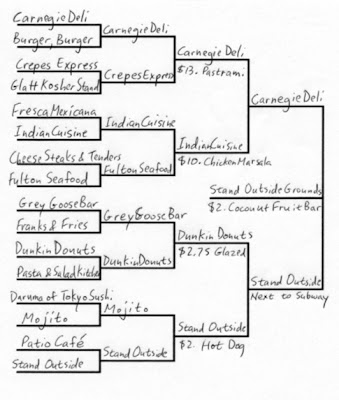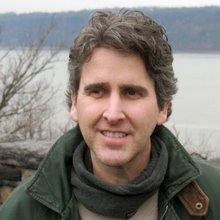
Felipe Galindo is a freelancer “extraordinario.” An award-winning cartoonist whose humor is enjoyed worldwide including in La Jornada (Mexico), The International Herald Tribune (Paris), F1-Red Bulletin (Austria), Hauser (Germany), Nebelspalter (Switzerland), The Spectator and Prospect (UK) Ode (Holland) and here in the US in The New Yorker, Mad, Nickelodeon, Reader’s Digest, and The Wall Street Journal. He has received many grants and awards and has been exhibited in over 100 shows including many permanent collections including; The Library of Congress, Washington DC, Benaki Museum, Athens, Greece, Vianden Castle Museum, Luxembourg, Omiya City Hall, Omiya, Japan, Palazzo Comunale Gallery, Foligno, Italy, Palacio dos Aciprestes, Linda-Velha, Portugal, National School of Arts, National University, Mexico City, Wilhem Bush Museum, Hannover, Germany, Museum of Caricature, Warsaw, Poland, The Sammlung Karikaturen Museum, Basel, Switzerland, and various US institutes.
If that wasn’t enough he’s has illustrated four books and has written, directed and animated short films (one of which was an award-winning short animated film about Mexican culture in New York that has been screened at more than 50 international festivals and cultural venues, including the Guggenheim Museum in New York and the Reina Sofia Museum in Madrid).
Freelancer’s Lament: I’m exhausted just glancing at your achievements–and this was edited down. Do you feel like you the struggle is over in your career and you have reached the promised land?Felipe Galindo: Hey, thanks for the introduction...I guess reaching America was to reach the promised land in terms of opportunity. I promised myself to try to make it here and I’m still trying!
FL: Coincidentally, you spent your honeymoon at Promised Land State Park. It’s located down the street from my house in Pennsylvania. You were born in Cuernavaca Mexico. How long have you been in the United States? FG: I came here in 1983. My original idea was to be in New York for 6 months...they have been the longest six months of my life! I didn’t know anybody here, so it was like starting a new life from scratch.
I got married in 1987. Promised Land Park is gorgeous in the fall, it was great being surrounded by the colorful trees and the threat of grizzly bears.
FL: Did you always speak English?FG: I learned basic English in high school, then learned a bit more listening to rock music and reading magazines at the American bookstore in my hometown. Being bilingual is like running 2 software programs in your brain all the time, unfortunately sometimes the computer crashes.
FL: What was your childhood like? FG: Was? You mean is over?
I was into superheroes, World War II comics and Disney movies (I thought Mr Disney did all the drawings!). I enjoyed spending my afternoons drawing. My family moved constantly due to my father’s job. I remember him desperately trying to make me a professional golf player but I was having more fun doing doodles than hitting the links. I was making money drawing his friends at the 19th hole (I sold my first drawing when I was 7 years old, and published my first cartoon when I was 18).
FL: When did you know you wanted to be a cartoonist?FG: When I was a kid I had the vague notion I could work at a place like Disney studios but never thought you could make a living as a cartoonist. I studied visual arts in college–painting and public art (there is no school for cartooning). I love art but also humor, so at the same time I was doing my paintings and projects at school, I was doing cartoons and selling them to publications in Mexico. I also came up with a pen name for my cartoons, a tradition among Latin American cartoonists. I compressed my full name, Felipe Galindo Gomez, into
Feggo.
I realized I was a real cartoonist after seeing my work published regularly, getting paid for it and having good feedback from the public.
I have never devoted myself exclusively to cartooning. I have many interests, I’m an art and history buff (early in my career I was a graphic researcher for the Mexican National Archives investigating watermarks on documents from the XVI-XIX centuries.). I now work on illustration, comic strips, animation, fine art, and recently public art.
FL: How difficult was it succeeding in a different country?FG: It was difficult but also incredible rewarding, sometimes even understanding the challenges was a challenge! My major surprise was the process to sell cartoons (sending the batch and wait several weeks or months for a response and/or payment.) I was lucky that soon after I arrived I had a good run with Twilight Zone magazine, they published a section titled “The Way-Out World of Feggo.” Also, most of my cartoons were captionless and I discovered that an additional market for captionless drawings was the editorial illustration field, something that I also pursued. I enjoy the challenge of coming up with an image that reflects the article, sometimes with a 2-hour deadline!
When I was a kid in Mexico, I admired the work of cartoonists like Sam Gross, Gahan Wilson and many others, illustrators like Guy Billout, or animators like Bill Plympton. So to be able to befriend them, being their peer, having lunch with them and listen to their stories is a Mastercard moment, priceless. It’s also fun being part of Mad’s famous contributors “Gang of Idiots.” Another good experience was to be invited by the Ministry of Culture in Greece to attend a week-long workshop for international cartoonists in Athens and Patras. We even had lunch with the Greek president!
 FL: What is your favorite cartoon?FG:
FL: What is your favorite cartoon?FG: I don’t have one particular favorite but I always like my first ones in a publication. My first published cartoon in the US was in Audubon magazine (oddly enough I live now a few blocks from where he used to live and where he is buried, Audubon Terrace). The other is my first one in the New Yorker.
I also like my on-going series of works on paper titled “Manhatitlan”, inspired by Mexican culture in the New York City area, they are not cartoons but humorous works of art (Manhatitlan is a word I coined combining the Algonquin name Manhattan with Tenochtitlan, the Aztecs capital, now Mexico City.)
FL: Many at the New Yorker seem pained from the process and pressure one endures getting into the magazine. What is your side of the story?
FG: I started submitting sporadically soon after I came to NY. I have been doing it more regularly in the past few years, after Bob Mankoff became the cartoon editor. I think he has been more open to use other cartoonists and new humor.
About the pain of submitting… I guess it’s different for everybody. For me it’s a great learning opportunity. And like [Saul]
Steinberg said, it’s great calisthenics for the mind.
FL: How come you’re not in the Rejection Collection?FG: Perhaps I shouldn’t have sent my cartoons in Spanish, I thought the editors would be bilingual by now, ay caramba!
FL: Do you have a philosophy at being successful at cartooning?FG: I believe you have to feel successful every time you do a cartoon, every time you come up with an idea and put it on paper, even if you don’t sell it. Success lies within the process of making the art. I also think success is a relative concept, I don’t take anything for granted.
FL: What came first, the idea or the drawing?
FG: In my case the idea comes first. The muse can call at odd times–I always carry a sketchbook to write down what the muse tells me, although sometimes the idea gets lost in the translation! I have several notebooks with written ideas ready to be drawn. I love to draw but it takes me quite some time to finish a cartoon.
FL: What projects are you working on now?
FG: Currently I’m working on a new animation that will be shown as part of an exhibition this fall. It’s titled Manhatitlan Codex. It’s part of the project I described earlier. I’ll send you an invite.
FL: Thank you, and I’d like to extend an invite to you and your wife to stay at my home in Pennsylvania this fall. You can revisit Promised Land. One last question! What advice would you give to those who are their own boss?
FG: Don’t yell at yourself if you don’t finish the job, just get up earlier. And give yourself a raise whenever you can! I guess discipline is the word… Excuse me, I have to go procrastinate now.




































